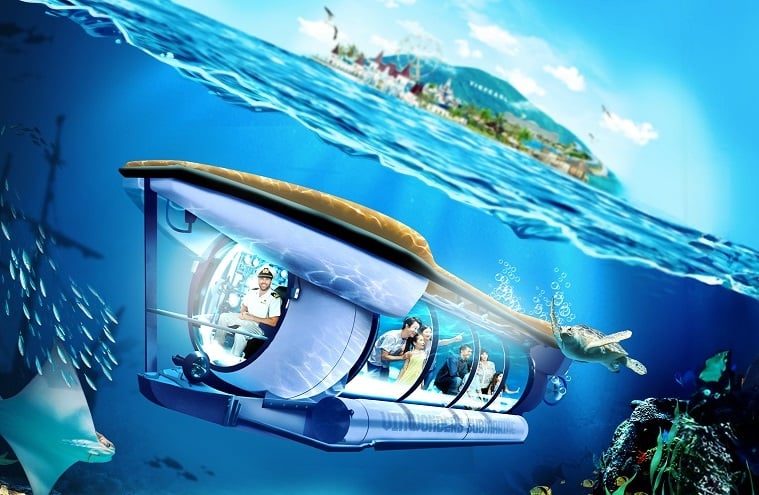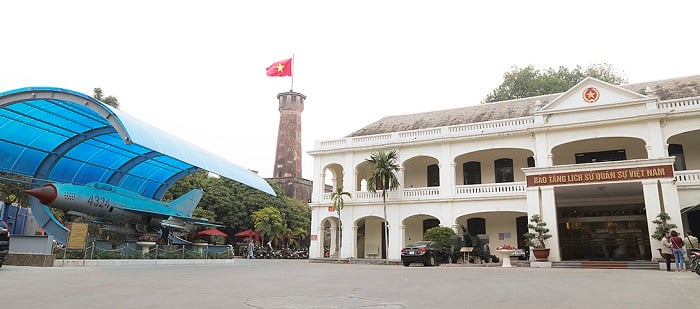
Vietnam Military History Museum is home to thousands of exhibits, photographs, maps, and scale models that were used throughout Vietnam’s long resistant history. If you are curious about the great victories of the S-shaped country, do not forget to add this site to your Hanoi travel itinerary to find the secrets behind it.
1. Where is Vietnam Military History Museum? How to get there?
- Address: No. 28A, Dien Bien Phu Street, Ba Dinh District, Hanoi
Located in the heart of Hanoi, Vietnam Military History Museum spans an area of 10,000 square meters. It is only a short walk away to other famous attractions, such as the Presidential Palace, Ho Chi Minh Mausoleum, Botanical Gardens, and Uncle Ho's stilt house.
There are many ways to get to the museum, including taxi, motorbike, and public transport. In Hanoi, there are many bus routes passing by the museum, such as buses No. 9A, 18, 32, 41, etc. The bus is considered the most economical means for those who are far from the city center. You can also rent a bike from your hotel or other rental businesses to go around by yourself. Be noted that you should ask for the price and check the vehicle carefully beforehand.

2. Information for visitors to Vietnam Military History Museum
Vietnam Military History Museum is open daily to all tourists, except for Mondays and Fridays. Details are as follows:
Opening hours: 8:00 am - 11:30 am and 1:30 pm - 4:30 pm
Vietnam Military History Museum entrance fee: 40,000 VND/visitor
To have a complete experience at the museum, you should also take notes of the museum’s regulations as below:
- Move as instructed by the museum staff, give way for the elderly and the disabled
- Do not bring any kind of weapons, explosives, flammable and toxic substances, and pollutants into the museum
- Leave personal luggage, suitcases, rucksacks, briefcases, and handbags at the left-luggage office (except for money and jewelry)
- Do not litter, eat, or smoke in the exhibition area
- Do not touch the exhibits and equipment
- Contact the museum staff to know the allowed areas for filming and photo taking
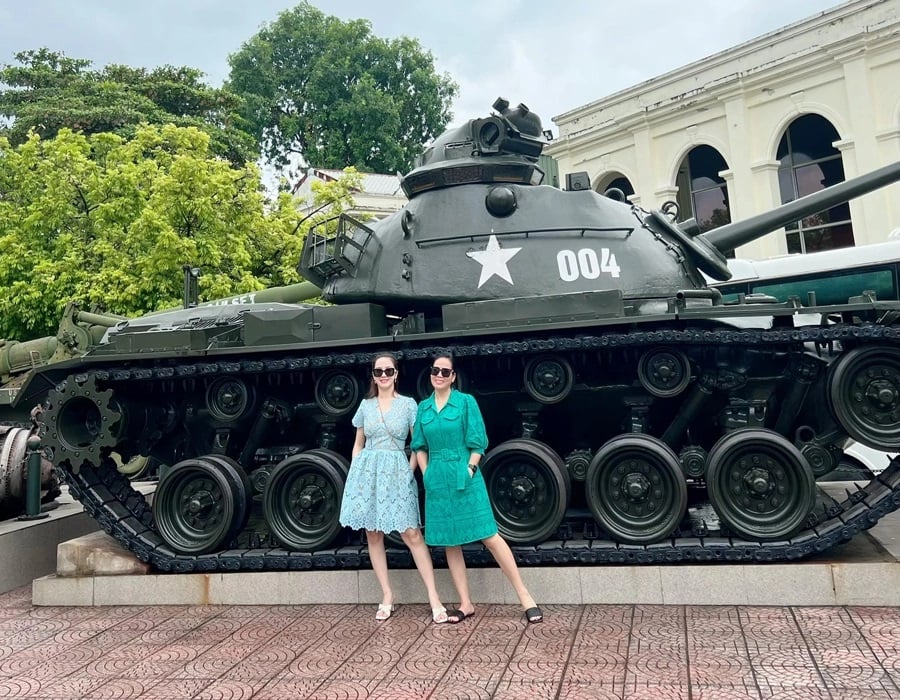
3. Things to know about the history of Vietnam Military History Museum
In order to preserve the evidence of the nation’s heroic struggles, at the end of 1954, under the direction of the Vietnam Communist Party, the Ministry of Defense constructed the Military Museum. On December 22, 1959, the museum was officially inaugurated, which was also on the 15th anniversary of the foundation of the Vietnam People's Army. On December 4, 2002, the Prime Minister issued a decision to change its name to Vietnam Military History Museum. It is currently one of the six national museums of Vietnam.
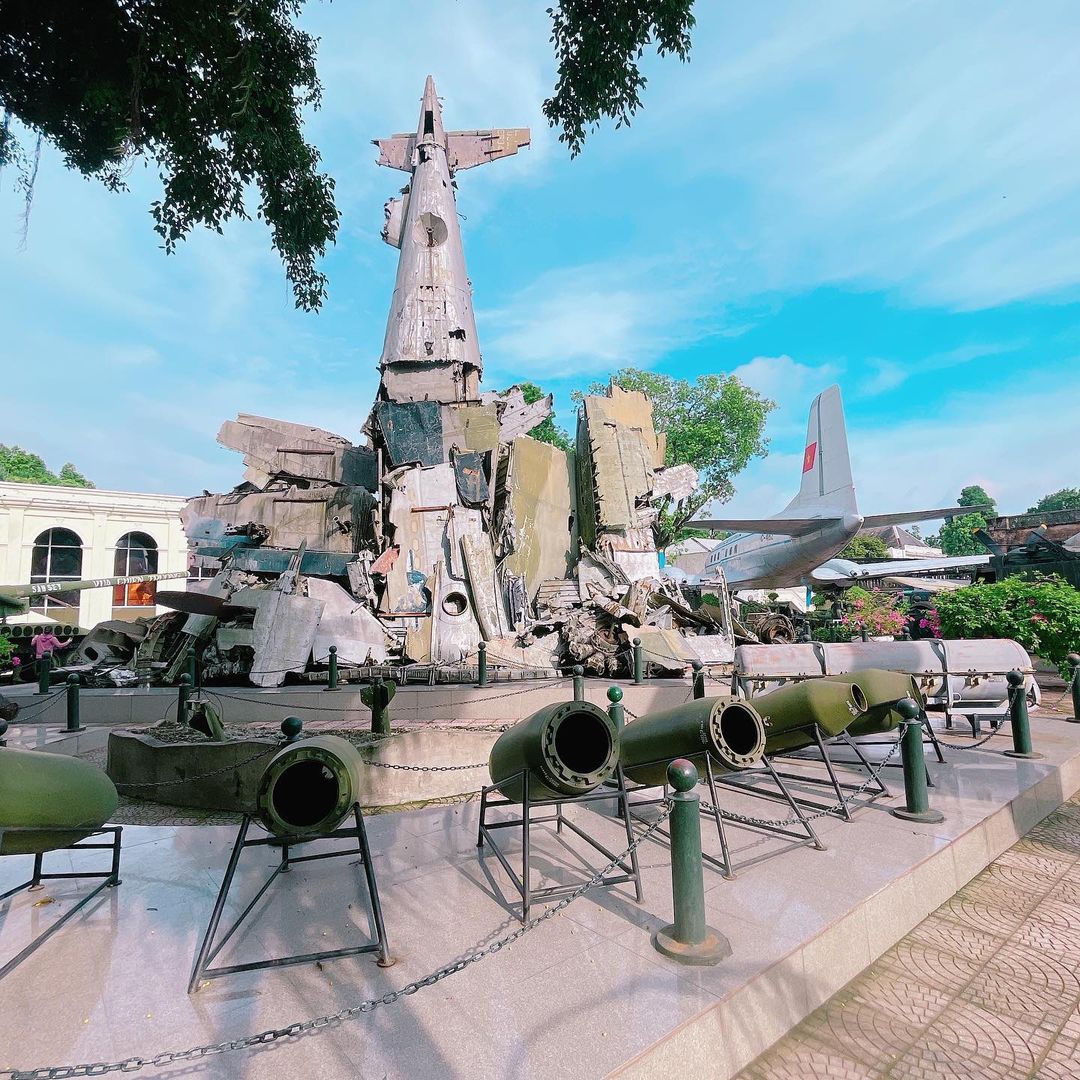
4. What to see in Vietnam Military History Museum Hanoi?
The museum covers the following six historical periods:
- Before 1930: The development and defense of the nation from the era of Hung Kings to 1930.
- From 1930 to 1953: The establishment of the Communist Party of Vietnam and Vietnamese revolutionary armed forces (1930 - 1945); the development of the armed forces during the resistance war against the French (1946 - 1953).
- The Winter-Spring Offensive (1953 - 1954) and Dien Bien Phu Campaign: The victorious campaign of the 1954 Dien Bien Phu Battle, forcing the French to sign the Geneva Agreement to end the war and restore peace in Indochina.
- From 1954 to 1968: The expansion of the Vietnamese army in South Vietnam as defense against the Americans.
- From 1969 to 1974: The victory of the Vietnamese people against American airstrikes, especially the battle in North Vietnam in 1972 that pushed the US to sign the Paris Peace Accords and led to the withdrawal of American soldiers from South Vietnam.
- The General Assault and Uprising of 1975: The final offensive that put an end to the resistance war against the Americans.
The museum now holds tens of thousands of exhibits, displayed in 3 indoor and 2 outdoor areas, leading tourists through the resistance wars of the Vietnamese people. Visitors normally need 2 hours to completely explore the great collection of weapons used throughout Vietnam’s long history. These artifacts will impress you with the wisdom and patriotism of the Vietnamese army and people that led to the victories of the country, as the weapons used by the invaders were far more advanced.
4.1. Indoor display
Vietnam Military History Museum Hanoi includes 3 buildings, each with 2 floors that are filled with numerous war artifacts and documents. Highlights of the indoor areas include:
- The wooden wattles used in the famous Bach Dang naval battle against the Mongolian army in 1288 by Great General Tran Hung Dao

- Shell mines, infrared optics, phones, and butterfly bombs produced by the US and used by France in the Indochina War, which were acquired by the Vietnamese army after the Dien Bien Phu Battle in 1954
- Guns produced by Vietnam and put into use during the resistance war against the Americans (1954 - 1975)
- T54B tank number 843, manufactured by the Soviet Union, which attacked Saigon Presidential Palace (now the Independence Palace) on April 30, 1975

- A bronze statue of a soldier created by sculptor Tran Dinh Hoe in 1960, which is displayed among artifacts related to the resistance war against French colonialists
4.2. Outdoor display
Located at the foot of Hanoi Flag Tower, the outdoor area contains airplanes, tanks, artillery, landmines, and other artifacts. A highlight of this area is the remnants of aircraft shot down by the Vietnamese army, notably the tail of the American F-111A that crashed directly into the ground.

The outdoor display also includes different types of bombs used by the US as well as Vietnamese artillery guns that shot down American B-52 heavy bombers. Here, you can also find cannons of the Nguyen Dynasty, which were made in the 19th century and discovered in the area around Thang Long Citadel in 2003.
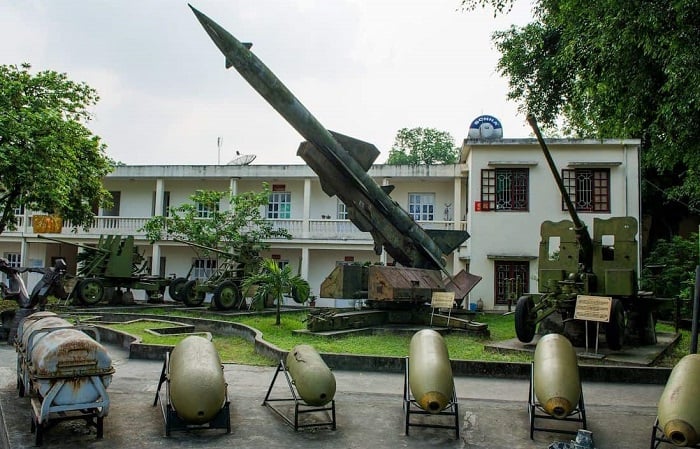
During your journey in Hanoi, in addition to Vietnam Military History Museum, you should also visit other tourist attractions, such as Hoan Kiem Lake, Ho Chi Minh Mausoleum, Hanoi Old Quarter, Presidential Palace, and especially VinKE & Vinpearl Aquarium Times City - a wonderful entertainment spot for your family and loved ones.
At Vinpearl Aquarium, one of the biggest aquariums in Vietnam, you have a chance to explore the colorful marine life of more than 30,000 different sea specimens. Meanwhile at VinKE, your family can have relaxing moments together while your kids are getting valuable vocational guidance through many job simulation games.

>>> Remember to book tickets of VinKE & Vinpearl Aquarium for exciting experiences in Hanoi!
Besides Hanoi, Vietnam has many other alluring destinations to explore, such as Phu Quoc, Nha Trang, Hoi An, etc. For each destination that you intend to go to, you should plan in advance regarding where to stay in order to have the best experience.
As a top-rated lodging brand with high-class services in Vietnam, the hotel and resort system of Vinpearl will definitely meet your every need. Here, you can enjoy luxurious rooms along with all sorts of amenities, such as outdoor swimming pools, children's playgrounds, babysitting services, restaurants, bars, gyms, etc. Vinpearl is present in most famous tourist destinations in the S-shaped country.

>>> Book rooms in Vinpearl Resort & Golf Nam Hoi An, Nha Trang, Phu Quoc to get the ultimate comfort during your Vietnam trip!
Vietnam Military History Museum is one of the most visited tourist attractions in Hanoi that you should not miss out on. Here, you can learn more about Vietnamese history through precious documents and an extensive collection of weaponry that was used throughout Vietnam’s long history. This fascinating site will promisingly be well worth your time.









